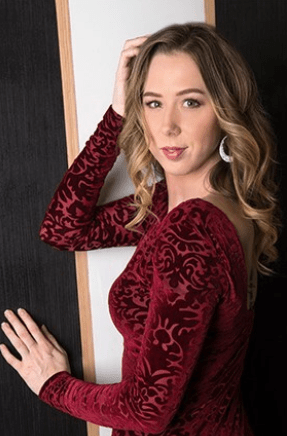Boudoir photography isn’t just about taking beautiful photos; it’s an intimate journey that captures raw, personal empowerment. One of the reasons why individuals who participated in boudoir sessions have felt more empowered and self-assured afterward. This genre allows individuals to confront insecurities and embrace their unique beauty.

If you’ve ever felt unsure about expressing your sensuality, you’re not alone. This guide offers essential tips to help you create captivating images that highlight your subjects’ beauty and empower them.
Let’s explore the art of boudoir photography and discover how to make your subjects feel stunning and confident.
Understanding Boudoir Photography
Boudoir photography is a style of photography that focuses on capturing the intimate, sensual, and romantic aspects of a person. Unlike glamor or fashion photography, boudoir is more personal and often involves the subject in lingerie or partially dressed, creating an atmosphere of vulnerability and allure. The goal is to empower the subject and highlight their unique beauty and personality, making them feel confident and beautiful.
Boudoir photography can be done in various settings, from a professional studio to the subject’s home. The key is to create a safe and comfortable environment where the subject feels free to express themselves.
Essential Equipment and Camera Settings
To capture stunning boudoir photos, you don’t need the most expensive equipment, but having the right gear can make a significant difference. Here are some essentials:
- Camera and Lenses: A digital SLR or mirrorless camera with interchangeable lenses is ideal. Lenses with focal lengths between 35-85mm and wide apertures (f/1.4 to f/2.8) are perfect for creating a shallow depth of field, softening the background, and focusing on the subject.
- Lighting Equipment: Natural light is often preferred for its soft and flattering qualities. However, studio lights like softboxes, beauty dishes, and LED panels can provide consistent and controlled lighting.
- Accessories: Reflectors, diffusers, and step ladders are useful tools for manipulating light and perspective. A tripod or monopod can help stabilize the camera, especially in low light conditions.
Creating the Perfect Atmosphere
The atmosphere plays a crucial role in boudoir photography. Here are some tips to set the right mood:
- Location: Choose a location that suits the subject’s personality. It could be a cozy bedroom, a luxurious hotel room, or even a unique outdoor setting. The environment should feel safe and private.
- Lighting: Utilize natural light as much as possible. Position your subject near a window with diffused light for a soft and romantic look. If using artificial light, opt for continuous lighting to avoid startling the subject.
- Comfort: Keep the room warm and provide a comfortable robe or blanket for breaks. Play soft, soothing music to relax the subject and create a welcoming ambiance.
Posing and Directing the Subject
Posing is one of the most challenging aspects of boudoir photography, especially if the subject is not a professional model. The key is to guide them gently and make them feel at ease.
- Classic Poses: Start with simple poses like lying on the bed, standing in front of a mirror, or sitting on a chair. These poses highlight the natural curves and features of the body.
- Personalized Poses: Encourage the subject to express their personality through their poses. This could include playful expressions, sultry gazes, or even laughter.
- Flow Posing: To capture natural expressions, ask the subject to move fluidly between poses. This technique helps in reducing stiffness and allows the subject to feel more natural and confident.
Lighting Techniques
Lighting can dramatically impact the mood and quality of boudoir photos. Here are some techniques to consider:
- Natural Light: Utilize soft, diffused natural light from windows. Adjust the curtains or blinds to control the intensity of light.
- Artificial Light: Use softboxes, beauty dishes, or LED panels to create a flattering, even light. Experiment with different light placements to achieve various effects, such as backlighting or edge lighting.
- Combination: Combining natural and artificial light can offer more control and versatility. Use artificial light to fill in shadows or add warmth to the scene.
Creative Ideas and Props
Incorporating props and creative ideas can add a unique touch to your boudoir photography. Here are some suggestions:
- Props: Use items like flowers, fabrics, or personal objects that have meaning to the subject. These can help tell a story and add visual interest.
- Themes: Experiment with different themes, such as vintage, modern, or fantasy. This can influence the styling, props, and overall mood of the shoot.
- Special Effects: Try techniques like milk bath photography, faceless portraits, or implied nudity to create intriguing and artistic images.
Editing and Post-Processing
Post-processing is an essential step in boudoir photography. It enhances the images while maintaining the natural beauty of the subject.
- Basic Retouching: Focus on skin smoothing, color correction, and removing any distractions.
- Advanced Editing: For a more polished look, adjust the lighting, contrast, and sharpness. Use editing software like Adobe Lightroom or Photoshop to fine-tune the images.
- Maintaining Naturalness: Avoid over-editing. The goal is to enhance, not alter, the subject’s natural appearance.
Displaying Boudoir Photos
Displaying boudoir photos can be done tastefully and creatively. Here are some ways to display boudoir photos at home:
- Photo Albums: A classic choice, albums keep the images private and are perfect for personal reflection.
- Wall Art: Choose discreet locations like the bedroom or dressing room. Consider canvas prints, framed photos, or even a photo wall.
- Digital Frames: A digital frame allows for a rotating display of images, providing a dynamic way to showcase the photos.
Conclusion
Boudoir photography is a beautiful way to celebrate individuality and confidence. With the right techniques, equipment, and creative ideas, you can capture stunning images that your subjects will cherish forever.
Whether you’re new to boudoir or looking to refine your skills, remember to keep experimenting and have fun with it. Your passion and creativity will shine through in your work, making each shoot a unique experience.




